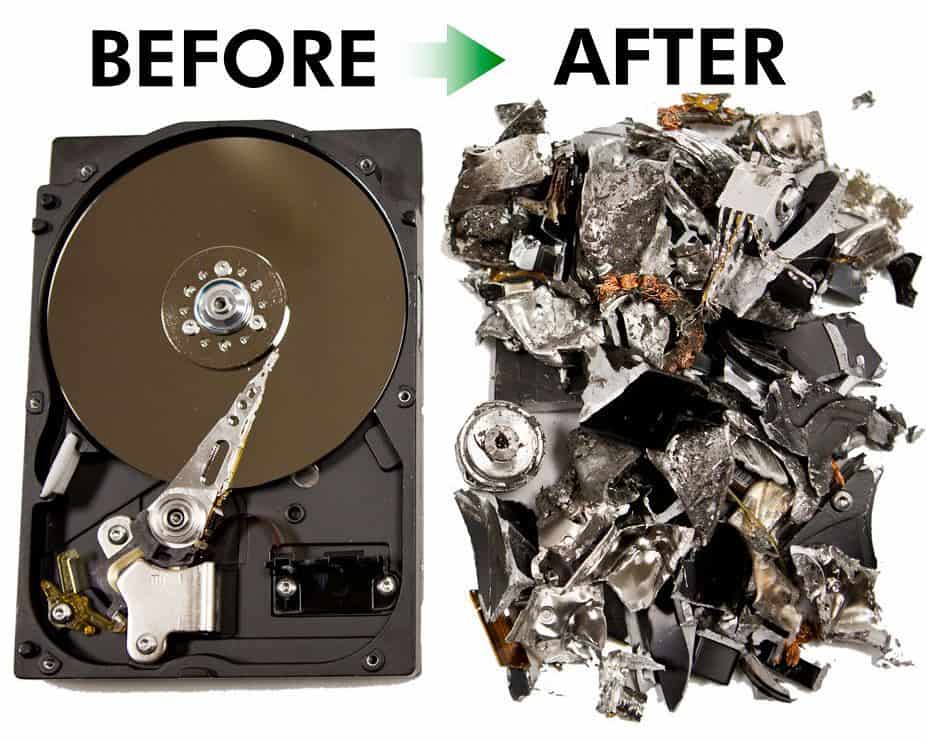Data Destruction Solutions: A Key Element in Your Cyber Security Method
Data Destruction Solutions: A Key Element in Your Cyber Security Method
Blog Article
Checking Out the Relevance of Information Devastation in the Context of Computer Safety Solutions and Protecting Confidential Data
In an era where information violations are significantly typical, the significance of reliable information damage can not be overemphasized. What strategies can companies implement to improve their data destruction protocols?
Comprehending Information Damage
Information damage is a vital part of computer system protection that involves the permanent removal of information from storage devices to avoid unapproved access and prospective data breaches. In a progressively electronic landscape, organizations face increased risks connected with delicate information being poorly accessed or made use of. Reliable data destruction safeguards versus these dangers, making certain that private dataâEUR" such as consumer details, intellectual residential or commercial property, and economic recordsâEUR" can not be recovered after disposal.
Understanding the importance of information damage prolongs beyond mere conformity with lawful and governing frameworks; it is important for keeping organizational integrity and depend on. When data is improperly handled or improperly ruined, the repercussions can be severe, including monetary loss, reputational damages, and legal obligations.

Approaches of Data Obliteration

One prevalent approach is data wiping, which involves overwriting existing information with arbitrary patterns numerous times. This technique renders the original data irretrievable, making it a prominent selection for organizations looking for to protect secret information.
Another method is degaussing, which uses a powerful electromagnetic field to disrupt the magnetic domains on storage devices, successfully getting rid of the data. This technique is particularly reliable for magnetic media yet is not appropriate to solid-state drives.
Physical damage is one more durable approach, including the shredding or crushing of storage space devices. This approach assurances that information recovery is virtually impossible, making it excellent for very delicate info.
Finally, encryption can function as a corresponding strategy to information obliteration. By securing information before removal, companies can add an extra layer of security, guaranteeing that also if remnants are recuperated, they stay inaccessible without the decryption secret. Each approach should be selected based upon the degree of data level of sensitivity and the specific safety and security requirements of the company.
Legal Compliance and Data Protection
Organizations must browse a complicated landscape of legal demands associated with data protection, especially after carrying out approaches of information eradication. Various regulations, such as the General Data Security Guideline (GDPR) and the Wellness Insurance Mobility and Liability Act (HIPAA), impose stringent standards on exactly how organizations have to dispose and deal with of sensitive data. Failing to abide by these policies can cause substantial legal effects, including substantial penalties and reputational damage.
Information devastation processes need to be carefully recorded to demonstrate conformity with suitable legislations and standards. This paperwork not just works as proof of adherence to lawful obligations but additionally shows a commitment to safeguarding delicate details. Organizations ought to likewise establish clear plans relating to data retention and damage timelines, making certain that data is not held longer than essential.

In addition, normal audits and evaluations of data damage practices are necessary to preserve conformity and adapt to advancing legal frameworks (data destruction). By proactively resolving lawful demands, companies can reduce dangers connected with data violations and demonstrate their dedication to information safety and security. Inevitably, prioritizing legal conformity in information destruction processes is not simply a regulative obligation, but a basic element of a robust information protection technique
Effect On Organization Reputation
The reputation of a service can be dramatically influenced by its strategy to information destruction and management. In today's digital landscape, you can try here where information breaches can occur at any moment, the failing to properly throw away delicate details can result in severe effects. Organizations that inadequately manage information damage danger revealing private customer details, which not just breaches privacy laws yet additionally erodes trust amongst stakeholders and customers.
A tarnished credibility can result in decreased consumer commitment, as clients become hesitant to involve with a business that has demonstrated oversight in securing their information. Furthermore, adverse promotion bordering an information breach can have an enduring effect, as potential consumers might be hindered by the regarded lack of safety. This can lead to a straight decrease in income and market share.
Moreover, services that focus on data devastation as part of their protection technique can boost their track record by showcasing their commitment to protecting delicate info. By embracing stringent information administration methods, organizations can not only reduce risks but also position themselves as reliable entities in their particular industries, consequently enhancing their overall brand picture.

Finest Practices for Secure Disposal
Applying ideal techniques for safe and secure disposal of information is necessary for minimizing dangers linked with information breaches and making certain conformity with personal privacy guidelines. Organizations must embrace an extensive data disposal policy that describes procedures for both physical and digital data devastation.
For physical information storage tools, such as difficult drives, shredding or degaussing is recommended to avoid information recovery. Furthermore, organizations must maintain a chain of guardianship documentation during the disposal procedure, making sure accountability and traceability of check this disposed things.
For digital information, utilizing software that follows market requirements for data cleaning is important. This software must overwrite existing data multiple times, making healing essentially impossible. It is also crucial to confirm the efficiency of the data destruction process with audits or third-party assessments.
Educating staff members on protected disposal methods includes an additional layer of safety, as human mistake can usually lead to data direct exposure. Regularly upgrading and evaluating disposal plans makes sure alignment with progressing regulations and technical improvements. By implementing these ideal methods, companies can significantly reduce the risk of unapproved information accessibility and improve their general data protection approach.
Verdict
In verdict, information damage is an essential aspect of computer safety solutions that makes sure the security of secret information from unapproved accessibility. Carrying out efficient methods of information elimination, sticking to legal compliance, and recognizing the influence on organization credibility are important elements of a detailed information protection strategy. By taking on finest methods for protected disposal, companies can foster trust fund with customers and protect delicate data, ultimately adding to an extra protected electronic landscape.
In an era where data violations are progressively common, the relevance of effective information destruction can not be overstated.Information damage is a vital component of computer system protection that involves the long-term elimination of data from storage check this site out space gadgets to prevent unauthorized access and prospective data violations. Organizations should likewise develop clear policies regarding information retention and destruction timelines, making sure that data is not held longer than essential.
By proactively resolving legal needs, organizations can minimize risks linked with data violations and demonstrate their commitment to data protection (data destruction). Ultimately, prioritizing legal compliance in data damage procedures is not simply a regulatory responsibility, however a basic aspect of a robust data safety and security approach
Report this page